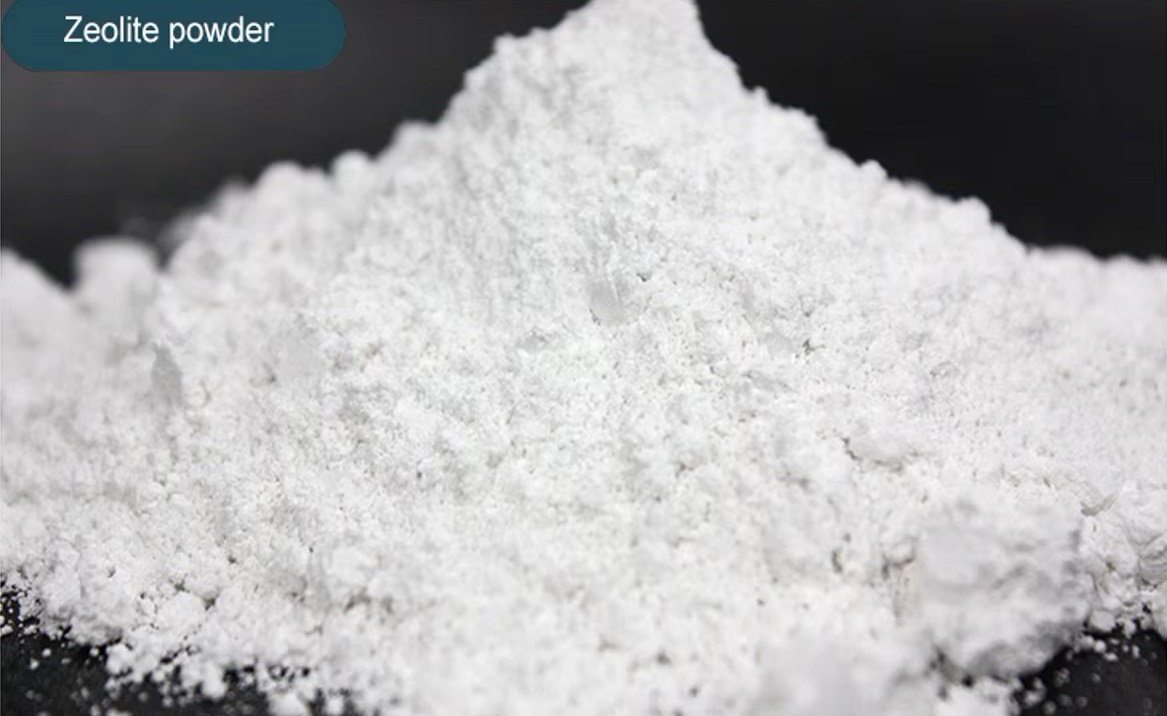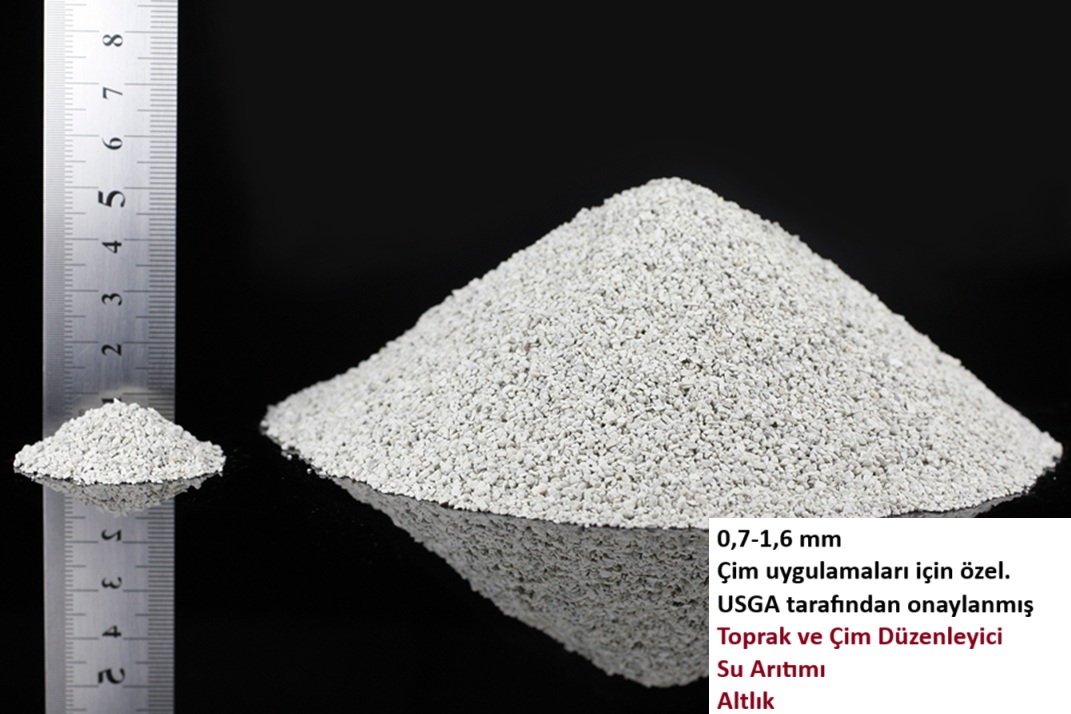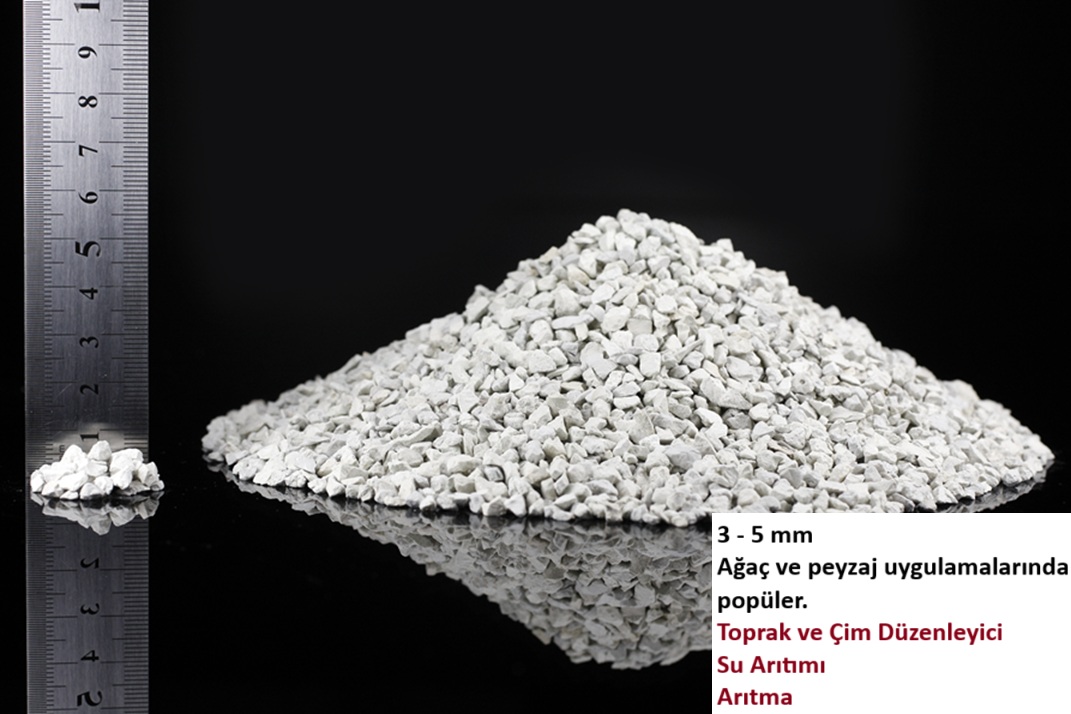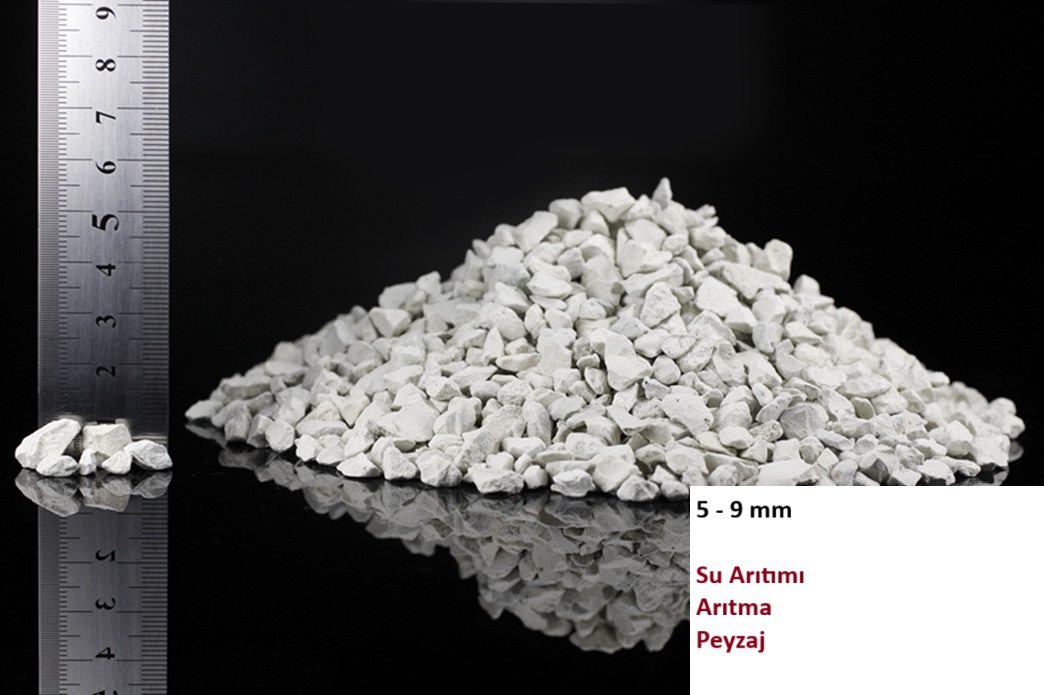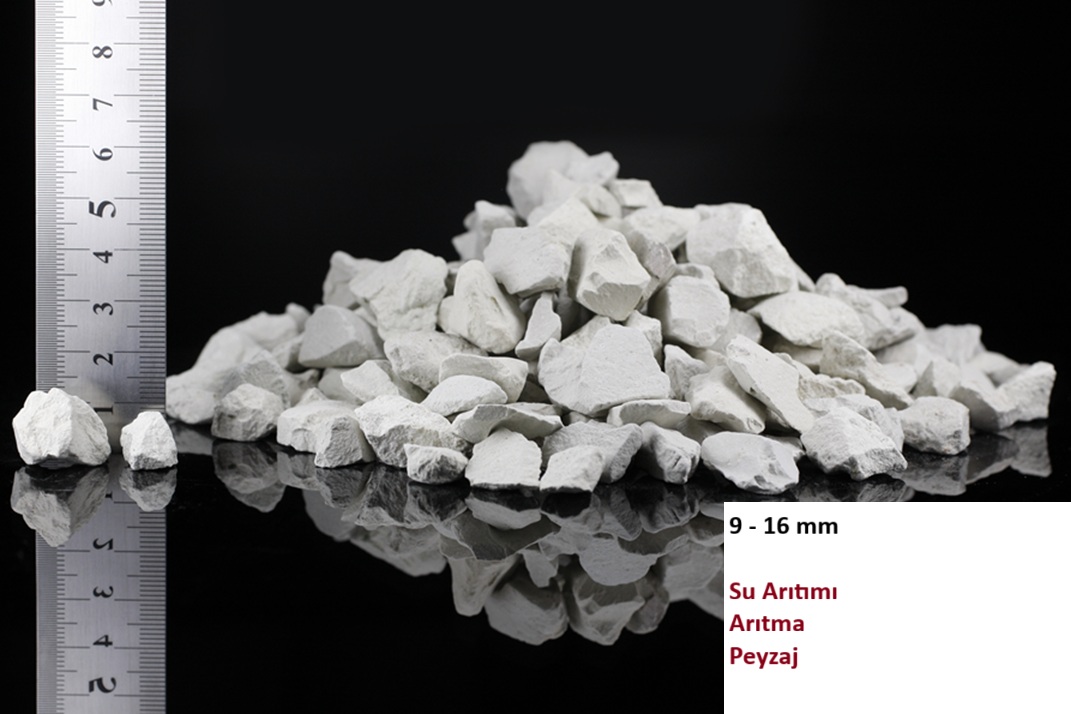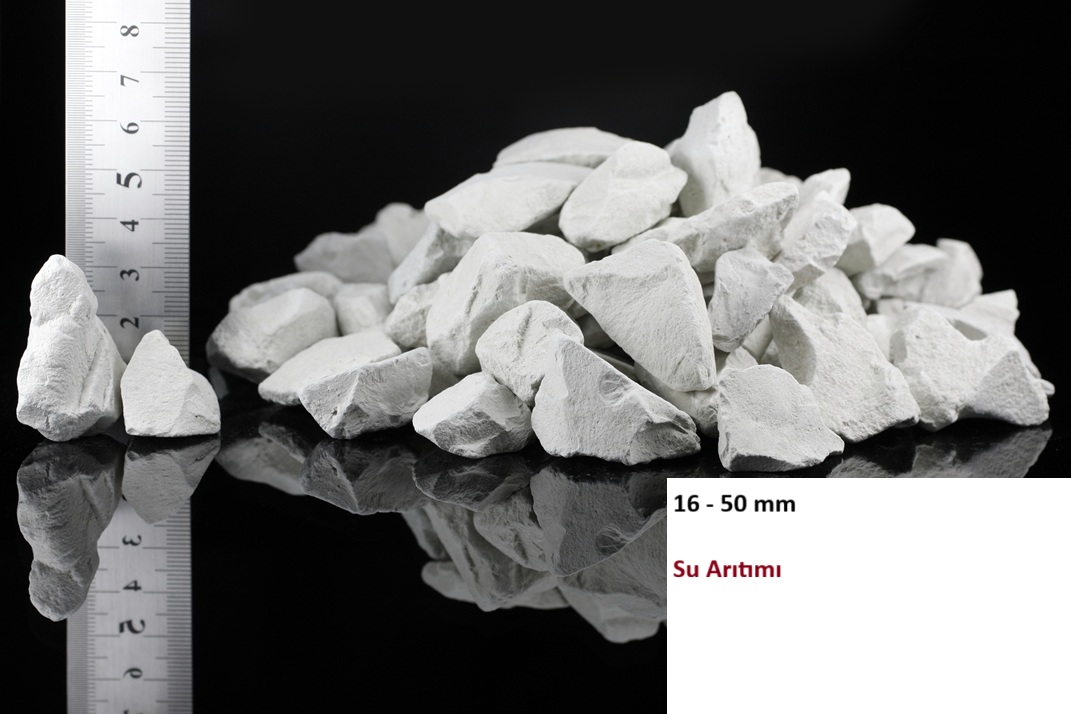We unleash your business potential by maximize the business innovation.
Send EmailZeolite, Clinoptilolite, Aluminum Silicate, 1318-02-1, 69912-79-4
📘 Page 1: What Is Zeolite?
Definition & Structure
-
Zeolite is a hydrated aluminosilicate with a crystalline, porous structure.
-
It contains a negatively charged lattice that enables cation exchange.
-
Clinoptilolite is the most abundant and industrially valuable natural zeolite.
Core Properties
-
High surface area and porosity (up to 50% of volume)
-
Ion exchange capacity: binds NH₄⁺, Pb²⁺, Cd²⁺, Cs⁺, Sr²⁺, and more
-
Adsorbs gases, odors, moisture, toxins, and heavy metals
-
Particle filtration down to 4 microns
🌊 Page 2: Water Treatment Applications
Filtration Modes
-
Mechanical: filters suspended solids (down to 4 µm)
-
Chemical: ion exchange removes NH₄⁺, Pb²⁺, Cu²⁺, Cd²⁺, Zn²⁺, Cs⁺, Sr²⁺
-
Biological: supports nitrifying bacteria for NH₄⁺ → NO₂⁻ → NO₃⁻ conversion
Benefits
-
Reduces COD, BOD, NO₃⁻, H₂S
-
Improves water clarity and dissolved oxygen
-
Stabilizes pH and suppresses algae
-
Used in aquaculture, municipal wastewater, and industrial effluent
🐄 Page 3: Animal Bedding & Livestock Hygiene
Functions
-
Absorbs urine and ammonia → reduces odor and respiratory stress
-
Prevents acidic bedding → protects hooves and skin
-
Controls moisture → reduces diarrhea and bacterial growth
Benefits
-
Improves air quality and animal welfare
-
Enhances manure quality for fertilization
-
Reduces cleaning labor and bedding costs
-
Safe, non-toxic, and long-lasting
🐓 Page 4: Feed Additive & Mycotoxin Binder
Mode of Action
-
Binds mycotoxins, NH₄⁺, and heavy metals via ion exchange
-
Selective adsorption: does not bind vitamins, amino acids, or antibiotics
-
Pore size: 4 Å → excludes large beneficial molecules
Benefits
-
Reduces aflatoxin impact and mortality
-
Improves feed flow, shelf life, and nutrient retention
-
Enhances digestion and feed conversion
-
Replaces sodium bentonite as rumen buffer
🌱 Page 5: Soil Conditioner & Agriculture
Functions
-
Enhances water retention and aeration
-
Increases CEC (cation exchange capacity)
-
Converts conventional fertilizer into slow-release form
Benefits
-
Reduces fertilizer leaching and volatilization
-
Prevents root burn from excess NH₄⁺
-
Detoxifies soil from heavy metals and agrochemicals
-
Certified for organic farming
🏗️ Page 6: Construction & Building Materials
Applications
-
Pozzolanic additive in cement (EN 197-1 compliant)
-
Improves concrete durability, sulfate resistance, and ASR mitigation
-
Used in plaster, paint, adhesives, ceramics, and insulation
Benefits
-
Reduces CO₂ emissions and cement usage
-
Enhances mechanical strength and flexibility
-
Absorbs odors and moisture in indoor materials
🛣️ Page 7: Asphalt & Road Safety
Warm Mix Asphalt Benefits
-
Lowers mixing temperature → saves energy
-
Improves workability and compaction
-
Reduces emissions, odors, and aerosols
Winter Use
-
Used as an eco-friendly alternative to salt on icy roads
-
Provides traction and absorbs surface moisture
🧴 Page 8: Medical & Cosmetic Products
Applications
-
Used in creams, masks, soaps, shampoos, toothpaste, bath salts
-
Detox agent: absorbs toxins, odors, and excess oils
-
Non-toxic and safe for topical use
Special Uses
-
Baby powder, foot powder, pet pads
-
Oral hygiene for smokers and halitosis
-
Dietary supplement (under medical supervision)
🧪 Page 9: Industrial & Environmental Remediation
Applications
-
Biogas: NH₄⁺ and H₂S removal → boosts methane yield
-
Landfill leachate: NH₄⁺ and heavy metal capture
-
Air purification: binds SO₂, H₂S, CO₂, VOCs, formaldehyde
-
Radioactive waste: Cs⁺, Sr²⁺, U⁶⁺ immobilization
Benefits
-
Reduces COD/BOD and stabilizes pH
-
Acts as a reactive barrier in nuclear and landfill sites
-
Used in oil spills and chemical leak absorption
📦 Page 10: Fillers & Raw Material Applications
As Filler
-
Adds mechanical strength, flexibility, and thermal resistance
-
Absorbs odors and moisture in packaging and textiles
-
Reduces need for other additives → lowers cost
Industries
-
Paper and cardboard (e.g. pizza boxes)
-
Plastics (PE, PP, PA): extends shelf life of produce
-
Rubber: improves tensile strength and hardness
-
Base material for synthetic zeolites and molecular sieves
🌍 Page 11: Environmental Remediation & Pollution Control
Applications
-
🧪 Absorbs NH₄⁺, heavy metals, and toxins from soil, water, and air
-
🌬️ Captures airborne pollutants: SO₂, H₂S, CO₂, VOCs, formaldehyde
-
🧱 Acts as a reactive barrier in landfills and contaminated sites
-
☢️ Immobilizes radioactive isotopes (Cs⁺, Sr²⁺, U⁶⁺) in nuclear waste
Benefits
-
Reduces chemical and biological oxygen demand (COD/BOD)
-
Stabilizes pH and improves effluent quality
-
Suppresses harmful bacteria and algae
-
Decreases reliance on chemical coagulants and polymers
🧫 Page 12: Sludge Treatment & Compost Stabilization
Challenges
-
Sewage sludge often contains high levels of NH₄⁺ and heavy metals
-
Composting releases ammonia and odors
-
Moisture retention complicates handling and reuse
Zeolite Solutions
-
🧪 Binds NH₄⁺ and metals → detoxifies sludge
-
💧 Dehydrates and stabilizes organic matter
-
🌬️ Reduces odor and ammonia emissions
-
🚚 Improves transportability and reuse potential
-
📉 Cuts operational costs and chemical inputs
🧪 Page 13: Air Purification & Gas Separation
Target Pollutants
-
CO₂, CO, SO₂, H₂S, NH₃, VOCs, formaldehyde, dioxins, furans
-
Fine particulates and volatile toxins in industrial exhaust
Applications
-
🏭 Steel plants, incinerators, gas scrubbers, chemical storage
-
🧲 Zeolite filters extend service life and reduce emissions
-
🌬️ Improves indoor and ambient air quality
☢️ Page 14: Radioactive Waste Management
Key Isotopes
-
Cesium-137 (Cs⁺), Strontium-90 (Sr²⁺), Uranium (U⁶⁺)
Mechanism
-
Zeolite pore size matches hydrated Cs⁺ radius → high affinity
-
Immobilizes radionuclides via ion exchange and lattice entrapment
Applications
-
🧱 Used in nuclear power plants and waste repositories
-
🧪 Acts as a barrier and stabilizer in cement or glass matrices
-
🛡️ Deployed in Chernobyl and Fukushima for emergency containment
🛢️ Page 15: Oil & Chemical Spill Absorbent
Use Case
-
Industrial accidents, fuel leaks, chemical spills
Advantages
-
🧲 Extremely high surface area and absorption capacity
-
💧 Rapidly absorbs hydrocarbons and aqueous chemicals
-
👃 Neutralizes odors and volatile emissions
-
♻️ Non-toxic, reusable in some applications
🧺 Page 16: Consumer & Household Applications
Odor Control
-
👟 Shoe cabinets, 🧊 refrigerators, 🚽 toilets, 🏠 kitchens
-
Absorbs ammonia, sulfur compounds, and organic odors
Moisture Control
-
💧 Used in desiccant sachets for electronics, textiles, and food
-
🧪 Maintains low humidity in packaging and storage
Winter Safety
-
❄️ Applied on icy roads as an eco-friendly alternative to salt
-
🧱 Provides traction and absorbs surface moisture
-
🌍 Reduces chloride runoff and infrastructure corrosion
🧪 Page 17: Zeolite Grades & Purity Considerations
Why Purity Matters
-
Only clinoptilolite is approved for feed additives under EU and Turkish regulations
-
Ion exchange capacity and adsorption efficiency are directly linked to purity
-
Low-grade zeolites (<70% clinoptilolite) offer limited technical performance
Recommended Grades
-
✅ Technical applications: ≥85% clinoptilolite
-
✅ Feed-grade: ≥90% purity, low heavy metal content
-
⚠️ Products below 65% purity may contain inert filler minerals
Quality Indicators
-
Si/Al ratio: affects selectivity and thermal stability
-
Particle size: tailored for filtration, feed, or soil use
-
Moisture content: relevant for desiccant and bedding applications
📜 Page 18: Regulatory & Safety Profile
Compliance
-
EU Regulation EC 1831/2003: approved as feed additive
-
REACH registered: safe for industrial and consumer use
-
EN 197-1: recognized pozzolanic material for cement
Safety
-
🧼 Non-toxic, non-carcinogenic, non-irritant
-
🧪 Chemically inert under normal conditions
-
♻️ Environmentally safe and biodegradable
-
🧬 Does not bioaccumulate or leach harmful substances
Handling
-
🧤 Use protective gear when handling fine powders
-
💧 Rinse before use in water filtration to remove dust
-
📦 Store in dry, sealed containers
📊 Page 19: Technical Specifications Summary
| Property | Typical Range |
|---|---|
| Clinoptilolite Purity | 85–95% |
| Si/Al Ratio | 4–5 |
| Cation Exchange Capacity (CEC) | 1.5–2.1 meq/g |
| Particle Size | 0.5–5 mm (customizable) |
| Moisture Content | <10% |
| pH (in suspension) | 7–9 |
| Bulk Density | 0.8–1.2 g/cm³ |
| Surface Area | 25–40 m²/g |
| Pore Size | ~4 Å |
| Thermal Stability | Up to 1200 °C |
📦 Page 20: Packaging & Logistics
Standard Formats
-
🧺 Bulk: 25 kg, 50 kg sacks or 1-ton big bags
-
📦 Palletized shrink-wrapped loads
-
🧴 Custom packaging for cosmetics, feed, or desiccants
Logistics
-
🚚 Available for FOB, CIF, DDP terms
-
🌍 Export-ready with multilingual labeling
-
📜 Accompanied by COA, MSDS, and TDS documents
Storage
-
🧊 Store in dry, ventilated areas
-
🧪 Avoid contamination with acids or reactive chemicals
🧭 Page 21: Application Matrix Overview
| Sector | Function | Zeolite Role |
|---|---|---|
| Water Treatment | Filtration, ion exchange | NH₄⁺, heavy metal removal |
| Agriculture | Soil conditioning | Moisture retention, CEC boost |
| Livestock | Bedding, feed additive | Odor control, toxin binding |
| Construction | Cement, plaster, paint | Pozzolanic, stabilizer |
| Cosmetics | Detox, cleansing | Toxin absorption, odor control |
| Air Purification | VOC & gas capture | Formaldehyde, SO₂, H₂S removal |
| Nuclear Waste | Radionuclide immobilization | Cs⁺, Sr²⁺, U⁶⁺ binding |
| Packaging | Desiccant, odor barrier | Moisture & gas control |
| Petrochemical | Spill absorbent |
Hydrocarbon capture |
🧠 Page 22: Functional Mechanism – Ion Exchange
Core Principle
-
Zeolite’s lattice is negatively charged → attracts and exchanges cations
-
Exchangeable ions: Na⁺, K⁺, Ca²⁺, Mg²⁺
-
Target ions: NH₄⁺, Pb²⁺, Cd²⁺, Cs⁺, Sr²⁺, Cu²⁺, Zn²⁺, Cr³⁺, Ni²⁺
Exchange Process
-
Contaminant cations replace native ions in zeolite structure
-
Reaction is reversible and selective based on ionic radius and charge
-
No structural degradation during exchange
Advantages
-
No chemical additives required
-
Works across wide pH and temperature ranges
-
Maintains performance over multiple cycles
🧪 Page 23: Molecular Sieving & Selectivity
Molecular Sieve Behavior
-
Pore size ~4 Å (angstroms) → filters molecules by size
-
Selectively adsorbs small polar molecules (e.g., NH₃, H₂O, CO₂)
-
Excludes larger molecules like vitamins, amino acids, antibiotics
Applications
-
Gas separation and purification
-
Controlled release in fertilizers and feed
-
Selective toxin binding in biological systems
Benefits
-
High specificity without affecting beneficial compounds
-
Ideal for food-grade and pharmaceutical applications
🧬 Page 24: Zeolite Types – Natural vs Synthetic
Natural Zeolites
-
Clinoptilolite (most abundant and effective)
-
Mordenite, Chabazite, Heulandite, Phillipsite, Analcime
Synthetic Zeolites
-
Zeolite A: water softening, detergents
-
Zeolite X/Y: petrochemical cracking
-
ZSM-5: high-temperature catalysis
-
SAPO-34: methanol-to-olefin conversion
Selection Criteria
-
Application-specific pore size and Si/Al ratio
-
Thermal and chemical stability
-
Regulatory approval for feed, pharma, or environmental use
📈 Page 25: Market Trends & Strategic Value
Global Demand Drivers
-
🌱 Sustainability: replaces harmful chemicals in agriculture and industry
-
🧪 Regulation: approved for feed, water, and air treatment
-
🧼 Consumer preference: natural, non-toxic ingredients in cosmetics and packaging
Emerging Applications
-
🧬 Biomedical detox and drug delivery
-
🧱 Green construction and carbon-neutral cement
-
🧫 Advanced filtration and gas separation
-
🛢️ Spill response and emergency containment
Strategic Advantages
-
📉 Cost-effective alternative to synthetic adsorbents
-
♻️ Environmentally safe and reusable
-
🌍 Export-ready with broad sectoral compatibility
📌 Page 26: Summary & Strategic Outlook
Zeolite – Clinoptilolite: A Natural Solution for Modern Challenges
Across industries and ecosystems, zeolite stands out as a multifunctional mineral that delivers:
-
✅ High-performance filtration and ion exchange
-
✅ Safe, non-toxic, and environmentally friendly alternatives
-
✅ Cost-effective solutions for pollution control, agriculture, and industry
-
✅ Regulatory compliance across feed, construction, and environmental sectors
-
✅ Versatility across solid, liquid, and gas-phase applications
Why Choose Zeolite?
-
🌍 Sustainability: Reduces chemical inputs, emissions, and environmental impact
-
📈 Efficiency: Enhances product performance and operational yield
-
🧪 Safety: Inert, stable, and approved for sensitive applications
-
💼 Market Adaptability: From nuclear waste to baby powder, one mineral serves many
Next Steps
-
For technical data sheets (TDS), safety data sheets (MSDS), or regulatory documentation, consult your supplier or laboratory partner.
-
For application-specific guidance, pilot testing is recommended to determine optimal dosage and particle size.
Zeolite is a microporous, crystalline aluminosilicate mineral composed of aluminum, silicon, and oxygen atoms. It has a three-dimensional framework with interconnected cavities that allow ion exchange and adsorption.
-
General Formula: Mn+ 1/n(AlO₂)− (SiO₂)x ・y H₂O
-
Pore Size: 0.3–0.8 nm
-
Solubility: Insoluble in water but capable of ion exchange
-
Color: Typically white or light gray, but varies depending on composition
-
Structure: Highly porous, allowing selective molecular adsorption.
2. Applications
Zeolite is widely used in various industries due to its adsorption, ion-exchange, and catalytic properties:
-
Water Purification: Removes heavy metals and contaminants from water.
-
Agriculture: Enhances soil quality and improves nutrient retention.
-
Animal Feed Additive: Absorbs toxins and improves digestion in livestock.
-
Petrochemical Industry: Used in gas separation and as a catalyst.
-
Cosmetics & Health: Applied in detox products and skincare formulations.
3. Other Names
Zeolite is also known as:
-
Molecular Sieve
-
Aluminum Silicate
-
Clinoptilolite (One of the most common commercial types)
-
Zeolite Powder.
📦 PRODUCT SIZES
Granular and Micronized Products
To meet diverse customer needs, zeolite products are manufactured in two separate facilities—one dedicated to micronized powders, the other to granular grades. Up to 11 different size ranges can be produced simultaneously. Below are standard grades; custom sizes are available upon request.
🧱 Granular Grades
| Size Range | Description | Packaging Options | Suggested Applications |
|---|---|---|---|
| 0.3 – 0.7 mm | Finest granule, sand-like | Bigbag: 1 ton Pp bag: 25 kg Bulk | Construction materials |
| 0.7 – 1.6 mm | Special for turf applications<br>USGA approved | Bigbag: 1 ton Pp bag: 25 kg<br>Bulk | Soil conditioner, turf, water treatment, bedding |
| 1.6 – 3 mm | Agricultural grade, cost-effective | Bigbag: 1 ton Pp bag: 25 kg Bulk | Soil conditioner, water treatment, bedding |
| 3 – 5 mm | Popular in landscaping and tree care | Bigbag: 1 ton Pp bag: 25 kg Bulk | Soil conditioner, water treatment, bedding |
| 5 – 9 mm | Medium granule | Bigbag: 1 ton Pp bag: 25 kg Bulk | Water treatment, landscaping |
| 9 – 16 mm | Coarse granule | Bigbag: 1 ton Pp bag: 25 kg Bulk | Water treatment, landscaping |
| 16 – 50 mm | Extra coarse granule | Bigbag: 1 ton Pp bag: 25 kg Bulk | Water treatment |
| Pellet | Cylindrical form | Bigbag: 1 ton Pp bag: 25 kg Bulk | Water treatment, feed additive |
🧪 Micronized Powder Grades
Particle size distribution is critical for performance and quality. In mining and industrial applications, powder grades are typically defined by three parameters:
-
Dv10: 10% of particles are smaller than this size
-
Dv50: 50% of particles are smaller than this size
-
Dv90: 90% of particles are smaller than this size
📌 This supplier classifies powders by Dv90, ensuring clarity and consistency. ⚠️ Many competitors use Dv50, which can misrepresent actual fineness. Example: A product labeled “100 micron” by Dv50 may actually be 400 micron by Dv90.
Always request particle size analysis before purchasing micronized zeolite.
🧪 Micronized Grades
| Grade | Description | Packaging Options | Applications |
|---|---|---|---|
| 10 micron | Activated & enriched Finest powder | Bigbag: 500 kg Pp bag: 10 kg Bucket | Medical & cosmetic |
| 25 micron | Activated Very fine powder | Bigbag: 650 kg Pp bag: 15 kg Bucket | Medical, cosmetic, feed additive |
| 50 micron | Industrial grad Very fine | Bigbag: 800 kg Pp bag: 20 kg Bucket | Medical, cosmetic |
| 100 micron | Intermediate grade | Bigbag: 1000 kg Pp bag: 25 kg | Medical, cosmetic, feed additive |
| 200 micron | Fine powder | Bigbag: 1000 kg Pp bag: 25 kg | Medical, cosmetic, feed additive, filler |
| 300 micron | Medium powder | Bigbag: 1000 kg Pp bag: 25 kg | Feed additive, industrial filler |
| 400 micron | Popular feed-grade Cost-effective | Bigbag: 1000 kg Pp bag: 25 kg | Feed additive, filler, construction, treatment |
| 0 – 1 mm | Coarsest powder | Bigbag: 1000 kg Pp bag: 25 kg |
